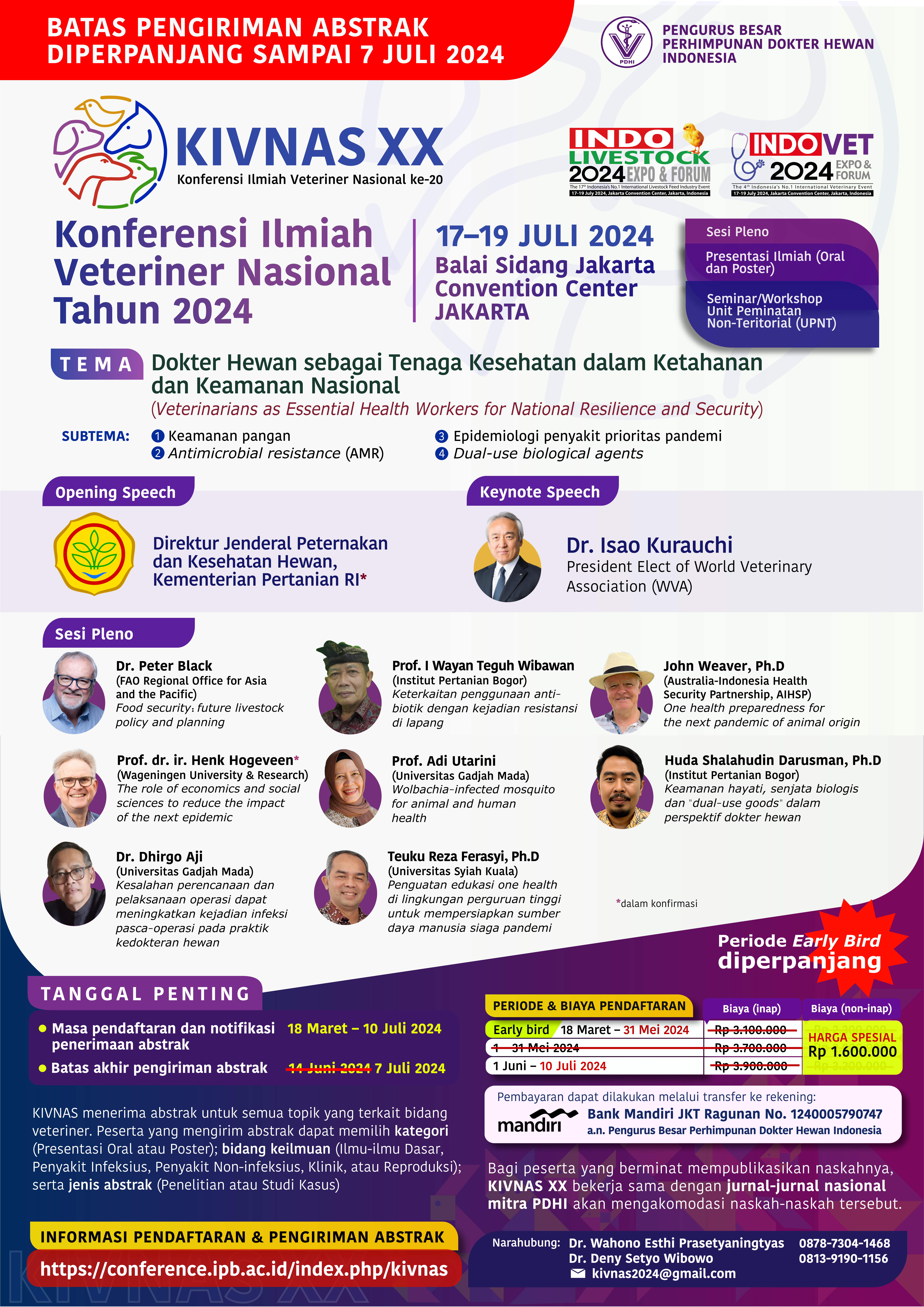Cost benefit analysis of rabies control in West Timor: A case study of Timor Tengah Selatan District
Keywords:
simulation model, cost benefit analysis, West Timor, rabiesAbstract
Background: A key element for the control of rabies in West Timor, part of East Nusa Tenggara Province, is mass vaccination of dogs. East Nusa Tenggara Province has received a commitment of 200,000 doses of rabies vaccines from Australia through Australia Indonesia Health Security Partnership (AIHSP), of which 100,000 have already been delivered (as at 2 October 2023). However, the initial vaccination coverage to control rabies in West Timor was low; only achieves 40% coverage.
Objective: The objective of this study was to evaluate the cost and benefits of the different rabies control in Timor Tengah Selatan (TTS) District in West Timor with different vaccination coverage of 40% versus 70%.
Method: Integrated epidemiology and economic model were developed to simulate the costs and benefits of the initial rabies control in TTS District and the optimal coverage of 70%. The initial response of rabies control in TTS District was mass vaccination of dogs but takes longer due to no/limited operating budget and only achieves 40% coverage. We simulated the costs and benefits of the different coverages of vaccination (40% versus 70%) within 10 years. The simulation was conducted in October 2023.
Results: Low coverage of mass vaccination (40%) results in ongoing risks and costs from responding to rabies cases in TTS District and leaded to spread rabies to neighbor or other districts in West Timor and Democratic Republic of Timor-Leste. This vaccination coverage (40%) is not effective and efficient to eliminate rabies (Benefit cost ratio=1,1) within 10 years. The vaccination coverage of 70% is high costs, but it will eliminate rabies within 4 years with benefit cost ratio=1,7.
Conclusion: Optimal control with vaccination coverage of 70% can be strongly recommended as it minimises the cost and duration of the program and maximises the opportunity of eliminating rabies from West Timor.



